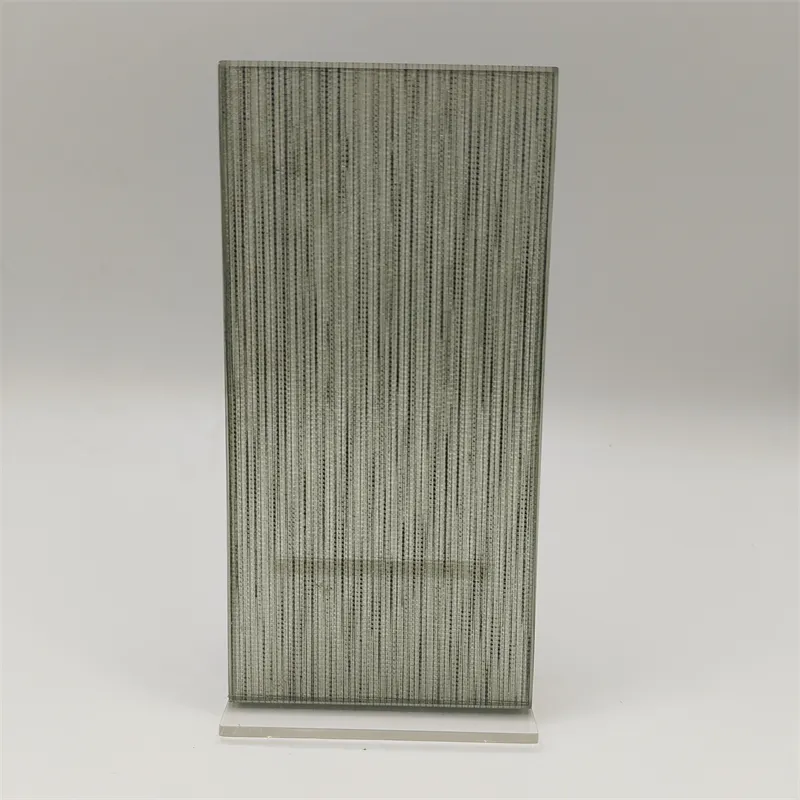Dec . 15, 2024 13:52 Back to list
Exploring the Benefits and Applications of Laminated Translucent Glass in Modern Design
The Allure and Benefits of Laminated Translucent Glass
In the ever-evolving world of architectural design and construction, materials play a pivotal role. Among these materials, laminated translucent glass has emerged as a popular choice for modern buildings, thanks to its unique aesthetic appeal and functional advantages. This article delves into the intricacies of laminated translucent glass, exploring its characteristics, applications, benefits, and future potential in architecture.
What is Laminated Translucent Glass?
Laminated translucent glass is a type of safety glass that consists of two or more layers of glass bonded together with an interlayer, typically made of polyvinyl butyral (PVB) or ethylene-vinyl acetate (EVA). This interlayer not only enhances the glass's strength and durability but also allows for a degree of translucency that can soften harsh rays of sunlight while maintaining privacy and diffusing light throughout a space.
Aesthetic Appeal
One of the most significant advantages of laminated translucent glass is its aesthetic appeal. It offers a modern, sleek look that can transform any building façade. The glass can be engineered to achieve various levels of translucency, from near-opaque to semi-transparent, allowing architects to design spaces that harmonize with their natural surroundings. The ability to customize colors, textures, and finishes further enhances its decorative potential, making it a favored choice for both residential and commercial projects.
Functional Benefits
Aside from its visual allure, laminated translucent glass offers numerous practical benefits. One of the foremost advantages is safety. The lamination process ensures that if the glass is broken, the shards will adhere to the interlayer rather than scattering, significantly reducing the risk of injury. This safety feature makes it an ideal choice for high-traffic areas or buildings where safety is a primary concern.
Moreover, laminated translucent glass provides excellent sound insulation. The multiple layers effectively absorb sound waves, creating quieter indoor environments. This attribute is particularly beneficial in urban areas, where noise pollution can disrupt daily activities.
laminated translucent glass

Another crucial benefit is energy efficiency. Laminated translucent glass can help regulate indoor temperatures by reducing heat gain during the summer and heat loss during the winter. This property not only contributes to a more comfortable indoor climate but also can lead to significant energy savings over time, making it an environmentally friendly option.
Applications
Laminated translucent glass has found its way into a variety of applications across different sectors. In residential spaces, it is often used for windows, skylights, and partition walls, creating airy and open environments that promote natural light while ensuring privacy. In commercial settings, it is frequently utilized in office partitions, storefronts, and atriums, allowing for an inviting atmosphere that encourages collaboration and creativity.
Moreover, the education sector has also recognized the advantages of this material. Universities and schools are increasingly incorporating laminated translucent glass in their designs to foster a sense of openness and connectivity among students and staff.
Future Potential
The future of laminated translucent glass looks promising, driven by the ongoing innovations in building materials and technologies. As sustainability becomes a key focus in architecture, the demand for energy-efficient materials will likely continue to rise. Laminated translucent glass offers a viable solution that combines beauty with functionality, making it an excellent fit for green building initiatives.
Additionally, advancements in smart glass technologies, such as those that can change their translucency in response to environmental conditions, could further enhance the appeal of laminated translucent glass. These innovations would allow for even greater control over light and energy use, resulting in buildings that are both beautiful and efficient.
Conclusion
In conclusion, laminated translucent glass represents a harmonious blend of aesthetic charm, safety, and functionality. With its myriad benefits and versatile applications, it is poised to remain a staple in modern architecture. As designers and builders continue to explore its potential, laminated translucent glass will undoubtedly play a significant role in shaping the future of building design, contributing to both the beauty and sustainability of our built environment.
-
Safety and Style with Premium Laminated Glass Solutions
NewsJun.24,2025
-
Reinvents Security with Premium Wired Glass
NewsJun.24,2025
-
Premium Float Glass Line for Modern Architecture
NewsJun.24,2025
-
Low Emissivity Glass for Energy-Efficient Architecture
NewsJun.24,2025
-
High-Performance Insulated Glass Solutions for Modern Architecture
NewsJun.24,2025
-
Elevates Interior Style with Premium Silver Mirror
NewsJun.24,2025
Related PRODUCTS














